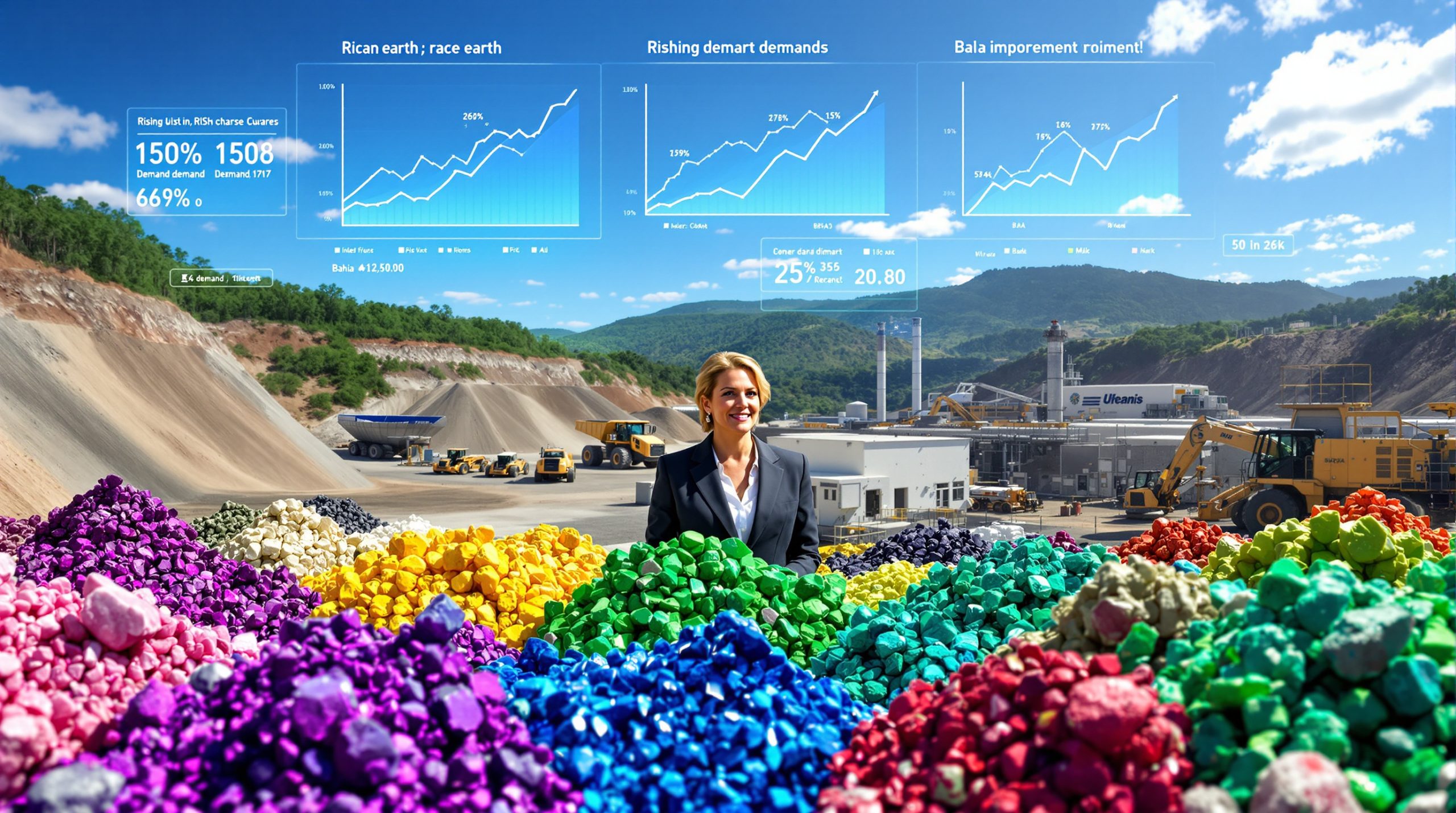What is the Kiaka Gold Project?
The Kiaka Gold Project is a significant gold mining development located in Burkina Faso, approximately 45 kilometers south of West African Resources' (WAF) existing Sanbrado gold mine. This large-scale venture represents a cornerstone in WAF's expansion strategy in West Africa as the company progresses toward becoming a half-million-ounce-per-year gold producer by 2030.
The project sits within the highly prospective Boromo greenstone belt, featuring a substantial gold deposit with favorable metallurgical characteristics. Geologically, the deposit consists of multiple mineralized zones with consistent grade distribution, making it ideal for large-scale open pit mining operations.
Project Ownership Structure
The Kiaka Gold Project follows a typical West African mining ownership structure:
- West African Resources (WAF): 90% ownership
- Government of Burkina Faso: 10% ownership (free-carried interest)
This partnership structure aligns with Burkina Faso's mining code, which mandates government participation in resource extraction projects. The arrangement ensures both corporate development returns and national economic benefits through direct participation in project success.
WAF acquired the project in early 2022 from B2Gold and Glencore in a transaction valued at approximately $100 million, demonstrating the company's commitment to regional expansion. The rapid development timeline—from acquisition to production in just 3.5 years—highlights WAF's operational efficiency and commitment to accelerated project delivery.
How Will the Kiaka Project Transform WAF's Production Profile?
The Kiaka Gold Project represents a transformative development for West African Resources, significantly expanding the company's production capacity and financial prospects. When combined with WAF's existing Sanbrado operation, Kiaka positions the company as one of West Africa's premier mid-tier gold producers.
Production Capacity and Timeline
Based on the comprehensive 2024 feasibility study update, the Kiaka Gold Project demonstrates impressive production metrics:
- First five years: Average gold production of 258,000 ounces per year
- Life-of-mine average: 234,000 ounces per year over a 20-year mine life
- Current status: First gold has been poured ahead of schedule, with the milestone achieved in July 2025
When added to the approximately 200,000-250,000 ounces annually from Sanbrado, WAF's combined production profile will approach 500,000 ounces per year, realizing the company's strategic target ahead of the projected 2030 timeline.
Economic Fundamentals
The July 2024 feasibility study update revealed robust economic indicators that underpin the project's value:
- Net present value (NPV): $1.18 billion (after-tax at 5% discount rate)
- Internal rate of return (IRR): 27%
- Payback period: 2.25 years (pretax) on pre-production development capital
- Pre-production capital expenditure: $447 million (excluding owner mining costs)
- All-in sustaining cost (AISC): Projected at $952 per ounce for the life of mine
These strong financial metrics demonstrate why the project has been fast-tracked to production and position WAF to generate substantial free cash flow. The economic model assumes a conservative $1,750 per ounce gold price forecast, providing additional upside potential in the current gold price environment.
Industry Context: Kiaka's 20-year mine life is exceptional in the West African context, where the average life of new gold projects typically ranges from 8-12 years. This longevity provides WAF with a stable production platform for decades.
What Mining and Processing Methods Will Be Used?
The Kiaka operation employs conventional open-pit mining methods optimized for the deposit's characteristics, with several innovations that enhance efficiency and cost-effectiveness.
Mining Approach
WAF implemented several key operational improvements compared to earlier development plans:
- Owner mining strategy: Shift from contract mining (in initial feasibility) to owner-operated mining, providing greater control and long-term cost benefits
- Equipment scale-up: Upgraded from 140-tonne excavators and 95-tonne trucks to 230-tonne excavators and 140-tonne trucks
- Mining rate increase: Additional 3.3 million tonnes per year compared to the 2022 feasibility study (approximately 15% higher throughput)
- Current status: Mining activities advancing at both Kiaka Main and Kiaka South pits with double-shift operations
The owner-mining approach represents a significant strategic decision. While requiring higher upfront capital for equipment acquisition, this approach typically reduces operating costs by 15-20% over the life of mine compared to contractor mining. For a long-life asset like Kiaka, these savings compound substantially over the 20-year operation.
Processing Technology
The Kiaka processing facility utilizes conventional gold recovery methods specifically optimized for the ore characteristics:
- Crushing circuit: Single-stage gyratory crushing for primary size reduction
- Grinding circuit: Semi-autogenous ball mill crusher (SABC) configuration for fine grinding
- Recovery method: Carbon-in-leach (CIL) processing with a 9-hour leach residence time
- Early performance: Metallurgical recoveries exceeding 92% during initial operations
- Ore characteristics: Free-milling gold ore with minimal refractory components, amenable to conventional processing
The processing plant design incorporates flexibility to handle variations in ore hardness throughout the deposit. The CIL circuit is particularly well-suited for Kiaka's ore, which contains minimal sulfides and negligible deleterious elements, supporting the excellent recovery rates observed during initial operations.
The facility has a nameplate capacity of 12 million tonnes per annum, making it one of the larger gold processing operations in West Africa. Power is initially supplied by diesel generators, with plans to connect to the national grid to reduce operational costs.
What is the Current Development Status?
The Kiaka Gold Project has achieved significant milestones ahead of schedule, demonstrating WAF's execution capabilities and the project's robust fundamentals.
Construction and Commissioning Progress
The project has reached several critical development markers:
- First gold pour: Completed in July 2025, ahead of schedule and under budget
- Initial production: First gold bars weighing 5.7 kg (183.3 troy ounces)
- Construction status: Substantially complete except for high-voltage grid power connection
- Processing plant performance: Exceeding expectations in early operations with throughput at approximately 85% of design capacity
- Current throughput: 140,000 tonnes of ore grading 0.7 g/t gold processed to date
- Ramp-up timeline: Expected to reach nameplate capacity through Q3 2025
The construction phase was completed with over 4 million hours worked with minimal safety incidents, reflecting WAF's commitment to safety standards. The early gold pour represents a significant achievement, as many West African mining projects typically face delays due to logistical challenges, permitting complications, or construction difficulties.
Mining Operations
The mining component of the operation is progressing well with several positive indicators:
- Active mining areas: Kiaka Main and Kiaka South open pits
- Operational schedule: Double-shift mining crews (24-hour operations)
- Stockpile status: Run-of-mine (ROM) ore stockpiles continuing to build, providing processing buffer
- Fleet utilization: Equipment availability exceeding 85%, supporting consistent ore delivery
- Grade reconciliation: Early mining showing good correlation with resource model predictions
The decision to implement owner mining has already demonstrated benefits through tighter operational control and faster ramp-up than typically seen with contract mining arrangements. The mining sequence has been optimized to target higher-grade zones early in the mine life, supporting stronger initial cash flows.
Operational Note: The early commissioning of the processing plant while the power connection remains pending demonstrates WAF's practical approach to project development, allowing production to commence while final infrastructure components are completed.
How Does Kiaka Compare to Other West African Gold Projects?
The Kiaka Gold Project stands out among West African gold developments for several reasons, positioning it as one of the region's premier gold assets.
Regional Significance
When compared to peer projects in West Africa, Kiaka demonstrates several distinguishing characteristics:
- Scale: One of the larger gold projects in the region with a 20-year mine life, versus the regional average of 8-12 years
- Production profile: Consistent high production over an extended period, with minimal variability year-to-year
- Development timeline: Rapid advancement from acquisition to production in just 3.5 years, compared to industry averages of 5-7 years
- Integration potential: Proximity to WAF's existing Sanbrado Project operation creates operational synergies unavailable to single-asset operators
Among comparable West African projects developed in recent years, Kiaka's attributes place it in the upper quartile for both size and economic returns. Projects of similar scale include B2Gold's Fekola in Mali and Perseus Mining's Yaouré in Côte d'Ivoire, both considered tier-one assets in the region.
Competitive Advantages
Several factors position Kiaka favorably compared to peer projects in the region:
- Ore body characteristics: Large, consistent gold deposit suitable for efficient open-pit mining with a low strip ratio (approximately 2.8:1)
- Processing simplicity: Free-milling ore requiring conventional processing technology, avoiding complex refractory ore treatment
- Infrastructure leverage: Ability to build on WAF's established regional presence, including logistics networks and supplier relationships
- Operational control: Owner-mining approach providing greater operational flexibility and cost control
- Political jurisdiction: Burkina Faso, despite security challenges in northern regions, has a well-established mining code and history of supporting foreign investment in the sector
The project's economics compare favorably to other recent West African developments, with its NPV of $1.18 billion exceeding similar-sized projects like Perseus Mining's Yaouré ($0.9 billion at comparable discount rates) and approaching the valuation of larger operations like Endeavour's Ity Complex.
What Are the Long-Term Implications for WAF and Burkina Faso?
The successful development and operation of the Kiaka Gold Project carries significant implications for both West African Resources and the host nation of Burkina Faso.
Strategic Impact for West African Resources
The Kiaka project represents a transformational development for WAF with several long-term benefits:
- Production growth: Significant step toward 500,000 ounce per year production target, potentially positioning WAF among the top-5 gold producers in West Africa
- Portfolio diversification: Second major producing asset in Burkina Faso, reducing operational risk through multiple production sources
- Cash flow generation: Strong projected cash flows to support further growth initiatives, debt reduction, and potential shareholder returns
- Operational synergies: Potential for shared resources and expertise with nearby Sanbrado mine, including logistics, procurement, and technical services
- Market revaluation: Potential for stock market rerating as WAF transitions from single-asset to multi-asset producer status
The financial implications are particularly noteworthy, with Kiaka expected to generate approximately $300-350 million in annual revenue at current gold prices analysis projections. This substantial cash flow provides WAF with options for accelerated debt repayment, funding exploration programs, or pursuing additional acquisition opportunities in the region.
Economic Benefits for Burkina Faso
The project delivers several important benefits to the host country:
- Revenue generation: Government's 10% ownership stake plus taxation and royalty income (3-5% of production value under Burkina Faso's mining code)
- Employment creation: Approximately 1,200 jobs during peak construction and 800-900 permanent positions during operations, with 90% expected to be filled by Burkinabe nationals
- Skills development: Training and capacity building for local workforce, including technical, administrative, and management skills
- Supply chain opportunities: Estimated $50-60 million annually in local procurement, benefiting Burkinabe businesses
- Infrastructure development: Improvements to regional power and transportation infrastructure that benefit surrounding communities
The economic impact extends beyond direct mining activities. Community development programs, including healthcare initiatives, educational support, and agricultural enhancement projects, provide additional socioeconomic benefits to local populations.
Regional Context: The mining sector represents approximately 15% of Burkina Faso's GDP and over 75% of export earnings, making projects like Kiaka vital to the national economy.
FAQs About the Kiaka Gold Project
When will Kiaka reach full production capacity?
Based on the project timeline, Kiaka is expected to reach its nameplate production capacity during the third quarter of 2025. The processing plant has already demonstrated strong early performance with metallurgical recoveries exceeding 92%, and throughput is scaling up according to plan. The final critical path item is completing the connection to the national power grid, which will reduce operating costs compared to the current diesel generator setup.
What innovations has WAF implemented at Kiaka?
The most significant innovation is the shift to an owner-mining strategy with larger equipment. This change from the original contract mining plan enables WAF to capture greater benefits from the long-life, consistent mining rates of the large-scale open-pit operation. Additionally, the processing plant incorporates advanced control systems and energy efficiency measures not typically seen in West African operations, including variable speed drives on major motors and a modern plant control system that optimizes reagent usage and power consumption.
How does Kiaka fit into WAF's overall growth strategy?
Kiaka represents a cornerstone asset in WAF's strategy to become a half-million-ounce-per-year gold producer by 2030. The project's long life and strong economics provide a stable production foundation while generating cash flow for further growth opportunities. WAF's management has indicated that the company aims to build a multi-asset portfolio in West Africa, potentially through a combination of mineral exploration insights and strategic acquisitions. Kiaka's robust cash generation capability will fund this expansion strategy.
What environmental considerations are addressed in the project design?
The Kiaka project incorporates several key environmental management systems:
- Water management: Closed-circuit water recycling system minimizing fresh water consumption
- Tailings management: Engineered tailings storage facility with progressive rehabilitation
- Energy efficiency: Variable speed drives and potential future solar power integration
- Land rehabilitation: Progressive rehabilitation plan implemented throughout the mine life
- Biodiversity protection: Buffer zones around sensitive habitats and watercourses
These measures align with international best practices and Burkina Faso's environmental regulations. The project underwent a comprehensive Environmental and Social Impact Assessment (ESIA) as part of the permitting process, with regular audits required throughout the mine life.
How might political factors in Burkina Faso affect the project?
As with any mining operation in West Africa, political stability remains an important consideration. Burkina Faso has experienced political transitions in recent years, and security challenges exist particularly in the northern regions of the country. However, WAF has demonstrated its ability to operate successfully in Burkina Faso through its Sanbrado mine, suggesting established relationships with government stakeholders and communities.
The Kiaka project is located in the south-central region of Burkina Faso, which has historically experienced fewer security incidents than the northern and eastern borders. WAF maintains comprehensive security protocols and community engagement programs to mitigate potential risks. Additionally, the economic importance of mining to Burkina Faso's economy provides a strong incentive for the government to support successful operations.
Future Outlook for the Kiaka Gold Project
Near-Term Priorities
Over the coming months, key focus areas for the Kiaka operation will likely include:
- Completing the high-voltage grid power connection to reduce operating costs
- Optimizing the mining and processing operations for maximum efficiency
- Ramping up to full production capacity (12 million tonnes per annum)
- Refining operational efficiencies and cost structures
- Expanding the skilled local workforce through training programs
The successful commissioning and ramp-up of Kiaka will establish WAF as a significant player in the West African gold sector. Management has indicated that achieving stable operations at nameplate capacity is expected by Q4 2025, with cost optimization continuing throughout the first full year of operations.
Long-Term Potential
Looking further ahead, the Kiaka project offers several opportunities for value enhancement:
- Exploration potential: Numerous satellite targets identified within the project area could extend the mine life beyond the current 20-year plan
- Operational synergies: Further integration with the nearby Sanbrado mine, potentially including shared processing facilities for satellite deposits
- Resource expansion: Current resource modeling extends to approximately 400 meters depth, with potential for deeper extensions
- Processing optimizations: Potential for throughput increases beyond nameplate capacity through debottlenecking initiatives
- Energy initiatives: Opportunities for renewable energy integration, including solar power to complement grid electricity
Industry analysts have noted that successful execution at Kiaka could position WAF as an attractive acquisition target for larger gold producers seeking to establish or expand their West African presence. Alternatively, the robust cash flow generation could fund WAF's continued independent growth into a mid-tier producer with multiple operations across the region.
The successful development of Kiaka demonstrates WAF's ability to execute large-scale projects efficiently and positions the company as a significant player in the West African [gold market performance](https://discoveryalert.com.au/
Ready to Capitalise on the Next Major Gold Discovery?
Discover emerging opportunities in the gold sector before the market with Discovery Alert's proprietary Discovery IQ model, which instantly identifies significant ASX mineral discoveries and transforms complex data into actionable insights. Visit our discoveries page to explore how major mineral discoveries have historically generated substantial returns for early investors.




